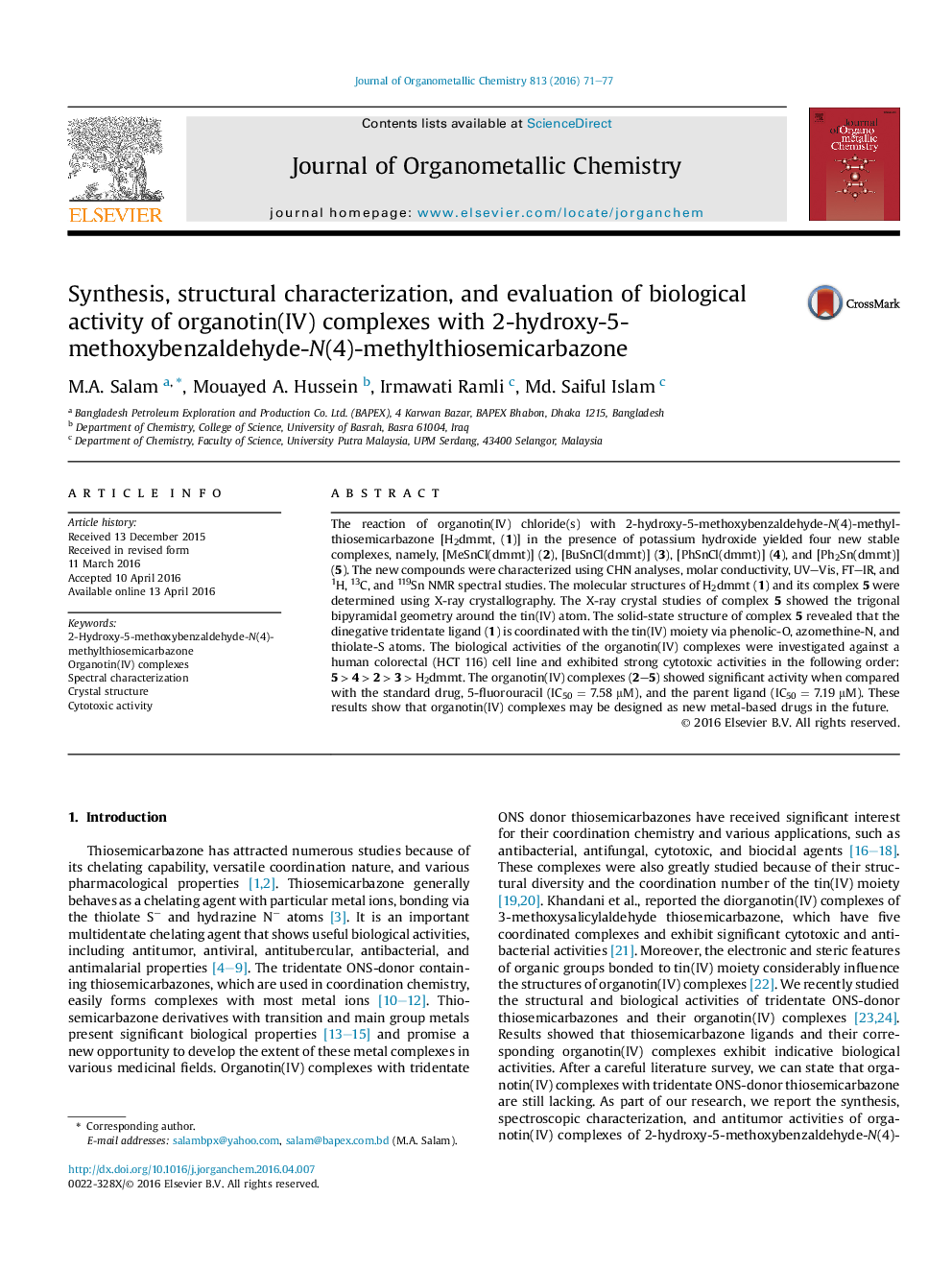| Article ID | Journal | Published Year | Pages | File Type |
|---|---|---|---|---|
| 1321750 | Journal of Organometallic Chemistry | 2016 | 7 Pages |
•Organotin(IV) complexes of 2-hydroxy-5-methoxybenzaldehyde-N(4)-methylthiosemicarbazone are synthesized.•Newly synthesized compounds are characterized by various spectroscopic methods.•We report the molecular structures of the ligand and its diphenyltin(IV) complex.•X-ray crystal studies indicated tin(IV) atom is five-coordinated and adopts a distorted trigonal bipyramidal geometry.•Organotin(IV) complexes can be considered as a potential anticancer agents.
The reaction of organotin(IV) chloride(s) with 2-hydroxy-5-methoxybenzaldehyde-N(4)-methylthiosemicarbazone [H2dmmt, (1)] in the presence of potassium hydroxide yielded four new stable complexes, namely, [MeSnCl(dmmt)] (2), [BuSnCl(dmmt)] (3), [PhSnCl(dmmt)] (4), and [Ph2Sn(dmmt)] (5). The new compounds were characterized using CHN analyses, molar conductivity, UV–Vis, FT–IR, and 1H, 13C, and 119Sn NMR spectral studies. The molecular structures of H2dmmt (1) and its complex 5 were determined using X-ray crystallography. The X-ray crystal studies of complex 5 showed the trigonal bipyramidal geometry around the tin(IV) atom. The solid-state structure of complex 5 revealed that the dinegative tridentate ligand (1) is coordinated with the tin(IV) moiety via phenolic-O, azomethine-N, and thiolate-S atoms. The biological activities of the organotin(IV) complexes were investigated against a human colorectal (HCT 116) cell line and exhibited strong cytotoxic activities in the following order: 5 > 4 > 2 > 3 > H2dmmt. The organotin(IV) complexes (2–5) showed significant activity when compared with the standard drug, 5-fluorouracil (IC50 = 7.58 μM), and the parent ligand (IC50 = 7.19 μM). These results show that organotin(IV) complexes may be designed as new metal-based drugs in the future.
Graphical abstractThe synthesis, characterization and cytotoxic activity of organotin(IV) complexes with 2-hydroxy-5-methoxybenzaldehyde-N(4)-methylthiosemicarbazone are reported. X-ray study revealed that the dinegative tridentate ligand (1) is coordinated to Sn(IV) centre via phenolic-O, azomethine-N and thiolate-S atoms. The Sn(IV) atom is penta-coordinated in solution for all organotin(IV) complexes. The biological activities of the organotin(IV) complexes were investigated against human colorectal (HCT 116) cell line and exhibited strong cytotoxic activities.Figure optionsDownload full-size imageDownload as PowerPoint slide
